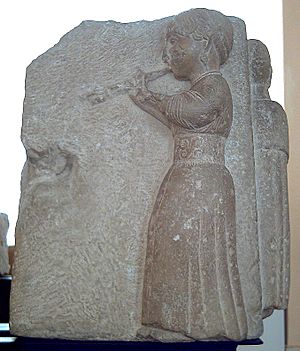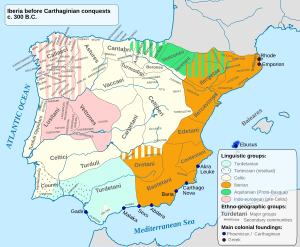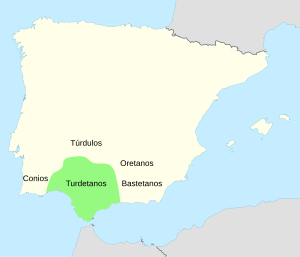Turdetani facts for kids

The Turdetani were an ancient group of people who lived in what is now southern Spain. They lived in the valley of the Guadalquivir River. The Turdetani called this river Kertis or Rérkēs. Later, the Romans called it Baetis. This area became the Roman Province of Hispania Baetica. The historian Strabo believed the Turdetani were connected to the people of Tartessos. He also thought they spoke a language similar to the Tartessian language.
History of the Turdetani People
The Turdetani often interacted with their neighbors, the Greeks and Carthaginians. A famous historian named Herodotus wrote about them. He said they had a well-organized society with a king. This king was named Arganthonios. He even welcomed new settlers from a Greek area called Phocaea around 500 BC.
Turdetani Society and Culture
The Turdetani were known for being quite advanced. They had their own written laws. They also hired Iberian mercenaries (soldiers who fight for money) to help them in wars. Another historian, Strabo, said the Turdetani were the most civilized people in Iberia. This meant their cities and way of life were similar to those of the Greeks and Romans.
Wars with Rome
After the Second Punic War ended, the Turdetani rebelled against their Roman governor. This happened in 197 BC. In 195 BC, Cato the Elder became a consul (a high-ranking Roman official). He was put in charge of all of Hispania. Cato first stopped a rebellion in the northeast. Then, he marched south. He successfully put down the revolt by the Turdetani. Cato described them as "the least warlike of all the Hispanic tribes." Cato returned to Rome in 194 BC. He left two praetors (Roman officials) in charge of the two provinces.
See also
 In Spanish: Turdetanos para niños
In Spanish: Turdetanos para niños



